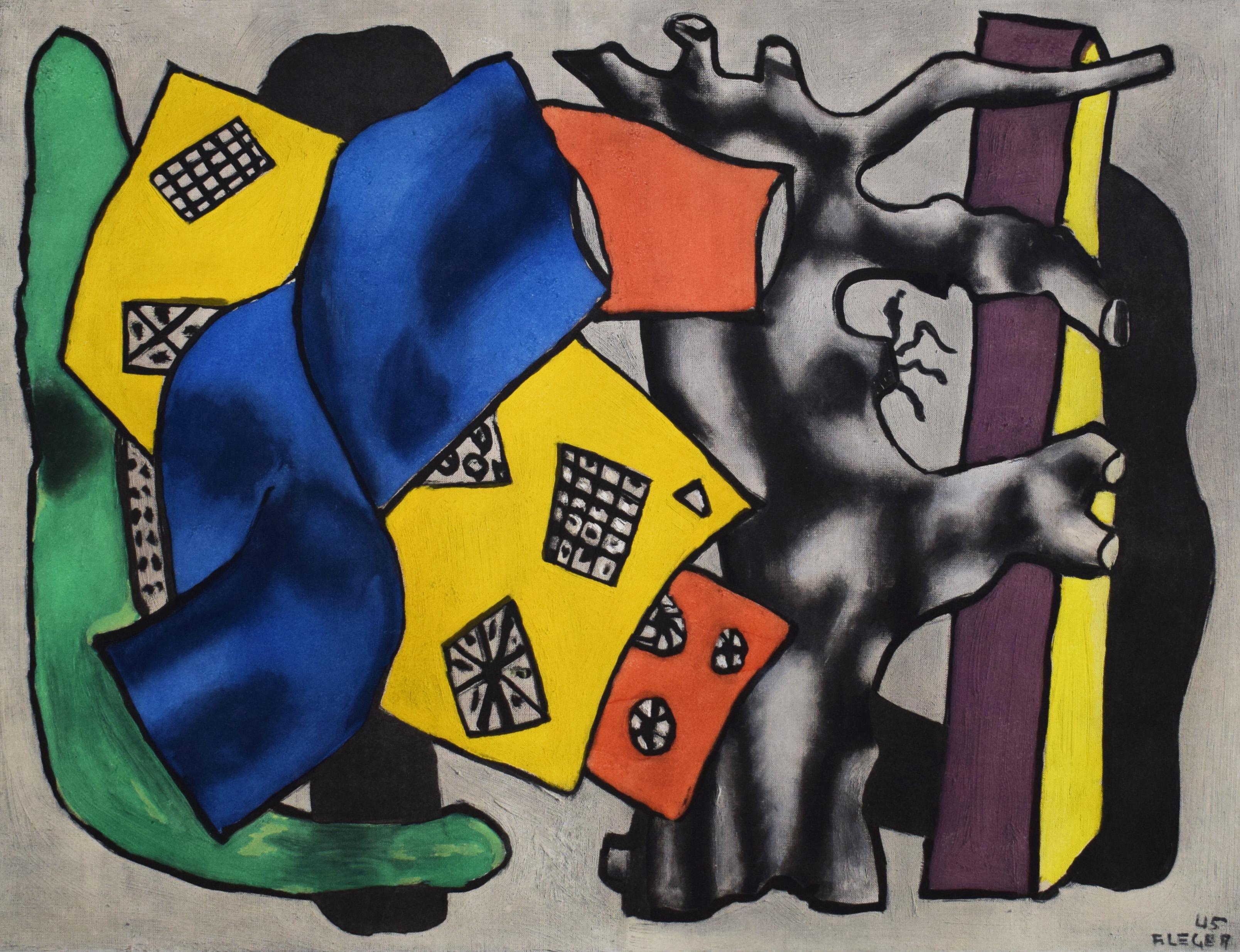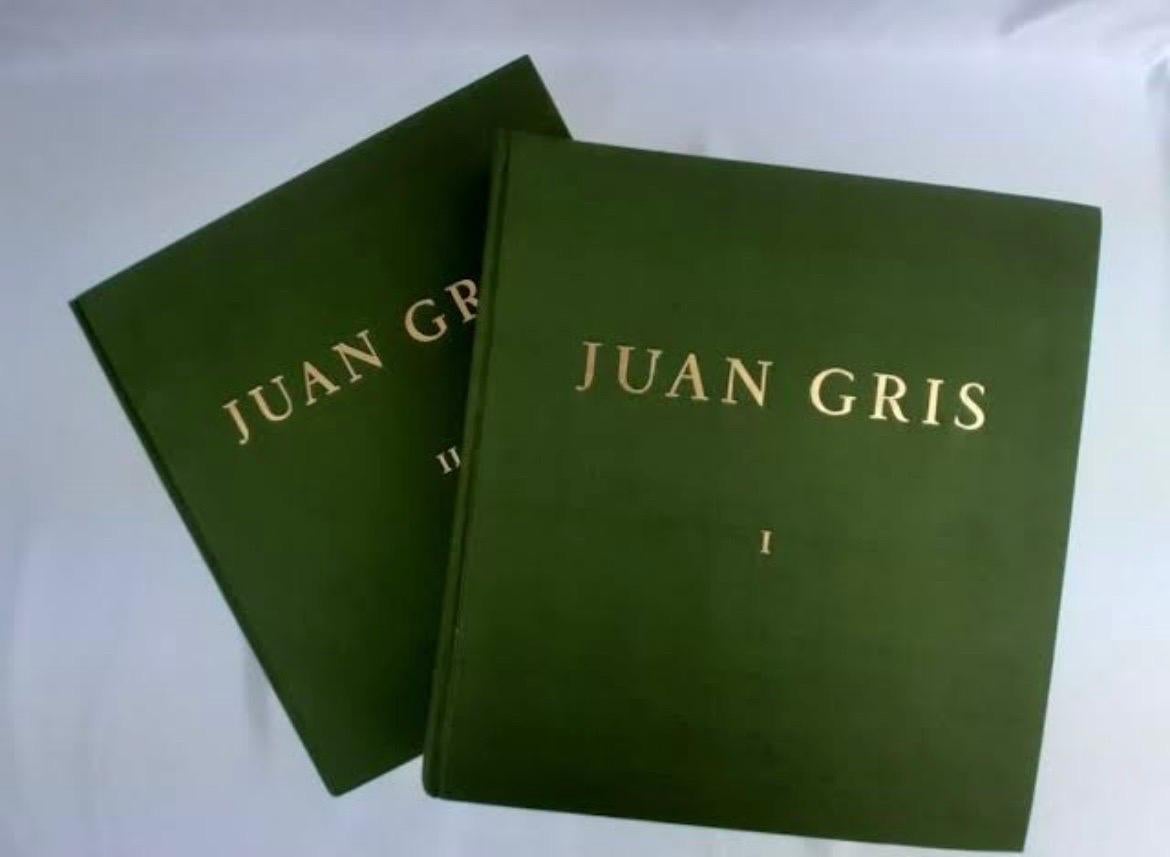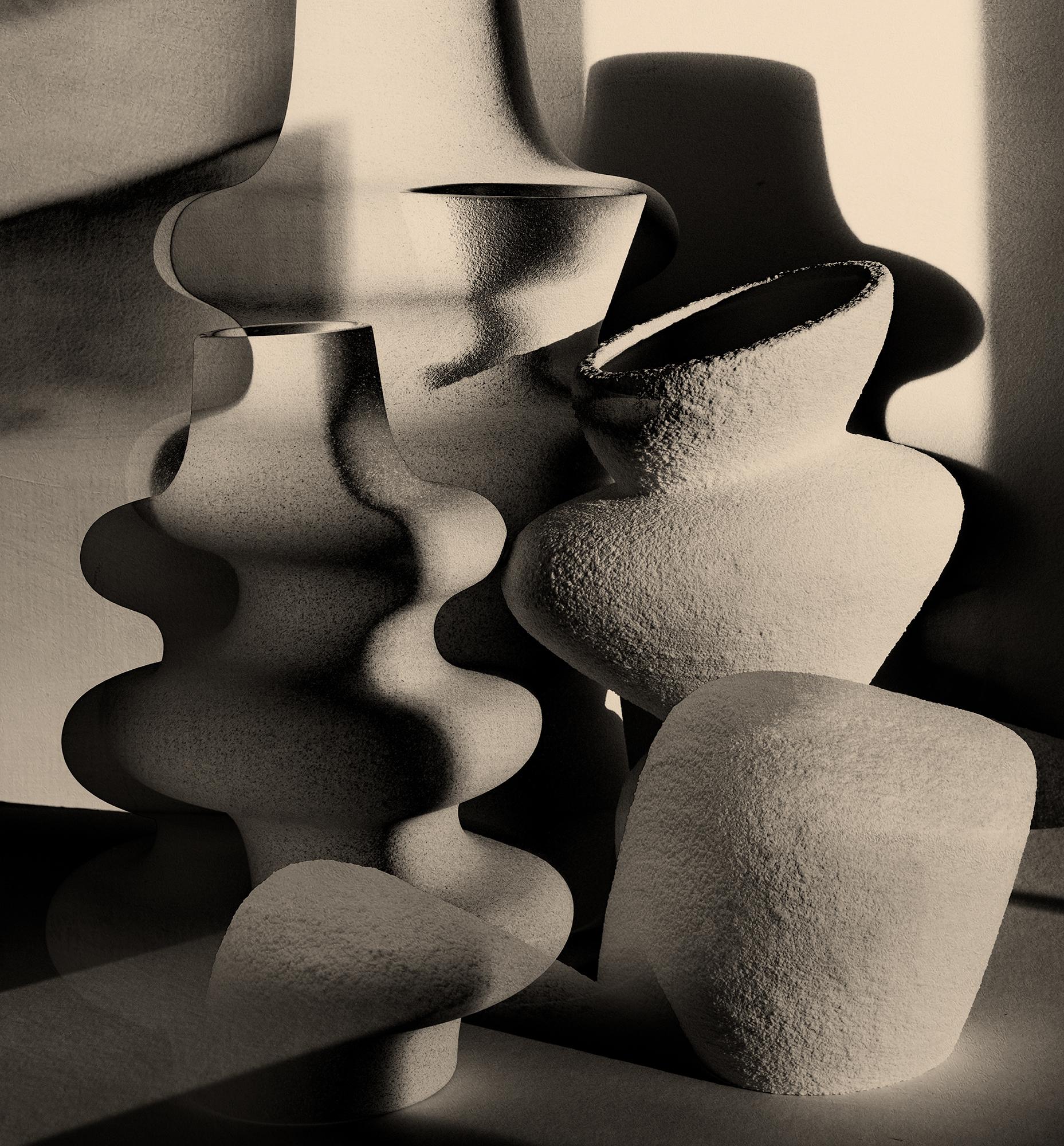Items Similar to Larionov stencil from 1916: Cricket costume for the ballet "Natural History"
Want more images or videos?
Request additional images or videos from the seller
1 of 8
Mikhail LarionovLarionov stencil from 1916: Cricket costume for the ballet "Natural History"1916
1916
About the Item
Beautiful Larionov stencil from 1916: Cricket costume for the ballet "Natural History
Mikhail Fyodorovich Larionov was a Russian avant-garde painter who worked with radical exhibitors and pioneered the first approach to Russian abstract art. His lifelong companion was another avant-garde artist, Natalia Goncharova.
Opera - Show - Avant-garde
Russian ballet Diaghilev
- Creator:Mikhail Larionov (1881 - 1964, Russian)
- Creation Year:1916
- Dimensions:Height: 13 in (33 cm)Width: 19.69 in (50 cm)
- Medium:
- Movement & Style:
- Period:
- Condition:Good condition, one fold.
- Gallery Location:PARIS, FR
- Reference Number:1stDibs: LU1792211502032
About the Seller
5.0
Platinum Seller
These expertly vetted sellers are 1stDibs' most experienced sellers and are rated highest by our customers.
Established in 2021
1stDibs seller since 2022
85 sales on 1stDibs
Typical response time: 1 hour
- ShippingRetrieving quote...Ships From: PARIS, France
- Return PolicyA return for this item may be initiated within 14 days of delivery.
More From This SellerView All
- 1986 original poster of David Hockney, Images and thoughts for Vogue magazineBy David HockneyLocated in PARIS, FRVery nice original poster of David Hockney, Images and thoughts for Vogue magazine at the Claude Bernard gallery. David Hockney was born in 1937 in Brad...Category
1980s Cubist Prints and Multiples
MaterialsPaper, Lithograph
- 1971 Original poster promoting an exhibition of Fernand LégerBy Fernand LégerLocated in PARIS, FRA beautiful poster promoting an exhibition with artworks by the French painter, sculptor and filmmaker, Fernand Léger (1881-1955). Léger was highly influenced by the movements in ar...Category
1970s Cubist Prints and Multiples
MaterialsPaper, Lithograph
- 1967 poster for an exhibition of Paul Klee at the Cantini Museum in MarseilleBy Paul KleeLocated in PARIS, FRBeautiful poster from 1967 for an exhibition of Paul Klee at the Cantini Museum in Marseille. Paul Klee was a Swiss-born German artist. His highly individual style was influenced by ...Category
1960s Cubist Prints and Multiples
MaterialsPaper, Lithograph
- 1956 original poster by Fernand Léger for the Musée des Arts DécoratifsBy Fernand LégerLocated in PARIS, FRFernand Léger's original 1956 poster for the Musée des Arts Décoratifs, taken from a 1924 work and printed by Mourlot, is a remarkable example of art combining past and present. Fern...Category
1950s Cubist Prints and Multiples
MaterialsPaper, Lithograph
- 1956 numbered Lithography by Fernand Léger for the Musée des Arts DécoratifsBy Fernand LégerLocated in PARIS, FRThis 1956 lithograph numbered 307/450 by Fernand Léger for the Musée des Arts Décoratifs, taken from a work dating from 1924 and printed by Mourlot, is a remarkable example of art co...Category
1950s Cubist Prints and Multiples
MaterialsPaper, Lithograph
- 1977 exhibition poster by Juan Gris edited by Mourlot for the Gallery BerggruenBy Juan GrisLocated in PARIS, FRBeautiful poster of exhibition of Juan Gris edited by Mourlot in 1977 for the Gallery Berggruen. José Victoriano González, who would later become Juan Gris, was born in Madrid in 1887. He abandoned his previous studies as an engineer to begin (1904) studies at the School of Arts and Manufactures in Madrid, and devoted himself to painting. His first works were inspired by the "Jugendstil" (German Art Nouveau movement), which the Madrid art world perceived as a major art form. Juan Gris was nineteen years old when he moved to Paris in 1906 and soon, after living in a hotel in Montmartre, he took a studio in the Bateau-Lavoir. Pablo Picasso was a close neighbor! The artist will, at first, earn a living by doing important work as an illustrator for famous French magazines (L'assiette au beurre, Charivari, Le cri de Paris, etc.) and Spanish ones. He produced more than 700 drawings for the press, mostly humorous or satirical. As soon as he arrived in France, Juan Gris painted, but he would not devote himself exclusively to painting until 1911. Gris was very impressed by the cubist works...Category
1970s Cubist Prints and Multiples
MaterialsPaper
You May Also Like
- Tribute to Cezanne : the Apples - LithographBy Georges BraqueLocated in Paris, FRGeorges BRAQUE Tribute to Cezanne : the Apples, c. 1955 Lithograph and stencil (Jacomet workshop) Printed signature in the plate On light vellum 39...Category
1950s Cubist Still-life Prints
MaterialsLithograph, Stencil
- La Mandoline - Lithograph and Stencil - 1943By (after) Georges BraqueLocated in Paris, FR(after) Georges Braque, (1882 - 1963) La Mandoline (1943) Lithograph and stencil On vellum 40 x 48 cm (c. 16 x19 inch) Printed signature in the plate Edition of 300 Very good co...Category
1940s Cubist Figurative Prints
MaterialsLithograph, Stencil
- 'Descente de Croix' (Descent from the Cross) — 1920s French CubismBy Albert GleizesLocated in Myrtle Beach, SCAlbert Gleizes, 'Descente de Croix', color pochoir, 1928, edition c. 50. Signed and dated in pencil. A fine, painterly impression, with fresh colors, on heavy, cream wove paper; the full sheet with margins (3 to 4 inches), in very good condition. The publisher's ink stamp 'EDITIONS MOLY-SABATA' beneath the image, lower left. Matted to museum standards, unframed. Image size 12 x 14 inches (305 x 356 mm); sheet size 18 x 22 inches (457 x 559 mm). ABOUT THE IMAGE After the 1927 painting 'Descente de Croix', one of three religious-themed works that Gleizes developed as preliminaries for murals at the church at Serrières, France, the project was terminated at its final phase, and Gleizes commissioned master printer Robert Pouyaud to create prints of the paintings, closely overseeing the production. ABOUT THE MEDIUM Pochoir is a refined stencil-based technique employed to create multiples or to add color to prints produced in other mediums. Characterized by its crisp lines and rich color, the print-making process was most popular from the late 19th century through the 1930s, with its center of activity in Paris. The pochoir process began with the analysis of an image’s composition, including color tones and densities. The numerous stencils (made of aluminum, copper, or zinc) necessary to create a complete image were then designed and hand-cut by the 'découpeur.' The 'coloristes' applied watercolor or gouache pigments through the stencils, skillfully employing a variety of different brushes and methods of paint application to achieve the desired depth of color and textural and tonal nuance. The pochoir process, by its handcrafted methodology, resulted in the finished work producing the effect of an original painting, and in fact, each print was unique. ABOUT THE ARTIST Albert Gleizes (1881-1953), born in Paris, France, was a pioneering figure in the development of abstract art and one of the leading proponents of Cubism. His contributions to the art world extended beyond his paintings; he was also a prolific writer and theoretician, advocating for a new approach to art that emphasized the geometric abstraction of form and a departure from representational traditions. Gleizes initially studied painting at the Académie Julian and the École des Beaux-Arts in Paris, where he was exposed to the academic conventions of the time. However, his artistic vision was profoundly influenced by encounters with avant-garde movements, including Fauvism and the work of Paul Cézanne. These influences led Gleizes to experiment with form and color, gradually moving away from traditional representation toward a more abstract and geometric style. After completing his secondary schooling, Gleizes spent four years in the French army and then began pursuing a career as a painter, primarily doing landscapes. Initially influenced by the Impressionists, he was only twenty-one years of age when his work titled ‘La Seine à Asnières’ was exhibited at the Société Nationale des Beaux-Arts in 1902. The following year, he was part of the first Salon d'Automne and soon came under the influence of Fernand Léger, Robert Delaunay, Jean Metzinger, and Henri Le Fauconnier. In 1907, Gleizes and some of his friends pursued the idea of creating a self-supporting community of artists that would allow them to develop their art free of any commercial concerns. For nearly a year, Gleizes , with other painters, poets, musicians, and writers, lived at a large house in Créteil, but a lack of funds forced them to give up their facility in early 1908, and Gleizes moved temporarily into La Ruche, the artist commune in the Montparnasse Quarter of Paris. In the early 1910s, Gleizes became associated with the Cubist movement, which was spearheaded by artists such as Pablo Picasso and Georges Braque...Category
1920s Cubist Abstract Prints
MaterialsStencil
- The Grey Root | Le racine gris - French Cubism Spitzer Collotype Still LifeBy (after) Fernand LégerLocated in London, GBThis collotype with pochoir is hand signed in black ink “F.Léger” at the lower right corner. It is also signed and dated in the plate at the lower right. It is hand numbered in pencil from the edition of 250, at the lower left margin. The work was published by Guy Spitzer in 1953 in a limited edition of 250 impressions. The blindstamp of the publisher is in the lower right, as issued. It is stamped with the publisher’s inkstamp, verso. It is additionally numbered with the edition number in blue ink, verso. This work is based on Léger’s oil...Category
1950s Cubist Still-life Prints
MaterialsStencil
- Juan Gris: Catalogue RaisonnéBy Douglas CooperLocated in Beverly Hills, CAPublished in a limited edition of 750. Author: Douglas Cooper Format: Hard Copy Publisher: Berggruen Éditeur Publisher Location: Paris, France Total Pag...Category
Early 20th Century Cubist More Prints
MaterialsPaper
- In Between the Shadows #6, Sepia Colour PrintLocated in London, GBIn Between the Shadows 6 Giclee Print on Hahnemuhle Pearl Fine Art Paper, Mounted 65 x 70cm, Edition of 5 + 2 Artist’s Proofs, Custom Framed with antireflective art glass Signed, comes with Certificate of Authenticity The series ‘In Between the Shadows’ consists of structural and geometric photographs that take their inspiration from the cubist movement. The works aim to challenge the conventional perception of depth within the medium of photography by showing different viewpoints at the same time and within the same space. The chiaroscuro lighting embraces shadows and light as juxta- positional tools to deconstruct familiar objects and transform them into surreal compositions. Sander Vos...Category
2010s Cubist Abstract Photography
MaterialsPhotographic Paper, Black and White, Color, Archival Pigment



